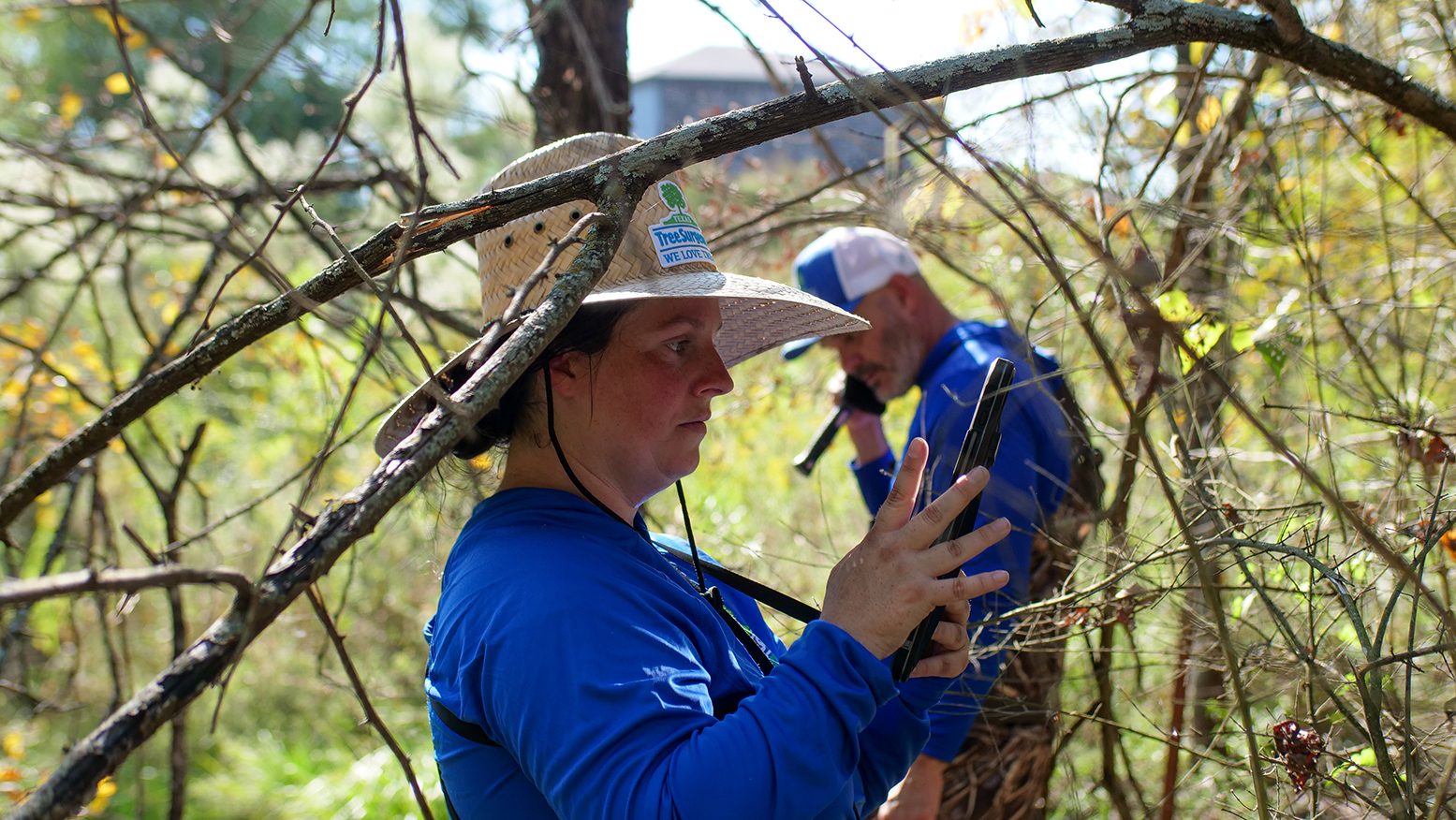Why Is My Tree Turning Yellow?

One hallmark of summer is the dense, green foliage on broadleaf trees, but less-than-ideal circumstances can cause the rich green of healthy leaves to become pale, yellowish, and translucent. This loss of color is caused by a deficiency in chlorophyll, which is an essential part of a tree’s nutrient-gathering process. While yellowing leaves can be a sign of several different conditions, in North Texas, yellow leaves on a tree that is usually green are most often a sign of iron deficiency (“iron chlorosis”). Since the historic freeze in February 2021, we have seen a higher number of trees exhibiting iron chlorosis, as they are still recovering from freeze damage and related stress, and their ability to get essential nutrients has been compromised. Luckily, most cases of chlorosis can be remedied by soil amendments and correct, targeted fertilization.
Why Are My Tree’s Leaves Yellow?
While it is expected to see pale green or yellowish new leaves on a tree during spring, the color of these young leaves should darken as they mature. By summer, most healthy deciduous trees should exhibit rich, green leaves. (There are some species of tree with naturally red, purple, or other-colored leaves, but these are less common in North Texas.) If a tree never “greens out,” or turns green but starts to fade well before autumn, there is a systemic health issue at play. Dead or dying leaves can turn yellow, but quickly become dark grey or brown. If a tree’s leaves become pale green or yellow, and stay that way, something is preventing the tree from generating enough chlorophyll.
Chlorophyll is a naturally-occurring chemical in most plants, and performs an important function in leaves. Chlorophyll is responsible for absorbing sunlight and converting it into usable energy for the plant. Chlorophyll is adapted to absorb as much of the correct type of light as possible, and that chemical makeup causes its green appearance. While other chemicals in the leaves can appear as other colors, in most plants, chlorophyll is present in a higher concentration than other pigments, and so it is the one we most clearly see. For a majority of plants and trees, vivid green leaves are a sign of good health and proper nutrition. When leaves begin to decline and die, as in the fall, the chlorophyll fades and other colors can be seen, which is why we see a leaf color change. Similarly, health issues and stress can make plants’ leaves change colors, as the necessary chemicals become imbalanced.
What Can I Do About Chlorosis (Leaf Yellowing)?
While the underlying cause of leaf yellowing (chlorosis) is chlorophyll deficiency, that deficiency may be caused by a number of factors:
- Mineral/nutrient deficiency
- Soil acidity/alkalinity
- Poor drainage/overwatering
- Root damage/compaction
- Herbicide exposure
- Bacterial/fungal infection
Management of the cause of chlorosis is the key to bringing a tree back to health. While some factors, such as soil pH or previous chemical exposure, may not be easily remedied, drainage issues and nutrient deficiencies can often be successfully resolved. Identification of the exact cause of chlorosis can be tricky, and there may be more than one contributing factor. For a comprehensive assessment, contact an ISA Certified Arborist who can examine not only the tree itself, but the surrounding environment, and can ask the right questions to properly understand the tree’s history. Local certified arborists also have access to plant pathologists and other experts, and may be aware of a widespread issue that is affecting your tree.
A NOTE ABOUT WATERING AND FERTILIZATION
A common knee-jerk reaction to a tree or plant not doing well is to immediately increase watering and start applying fertilizer. If the chlorosis is caused by excess soil moisture, however, more watering can cause even quicker tree decline. Similarly, applying a standard, high-nitrogen fertilizer may bring temporary improvement, but can cause further chemical imbalance in a nutrient-deficient tree and stimulate quick growth that is unsustainable. It is important to understand and address the specific cause of leaf yellowing before taking action. Contact an ISA Certified Arborist for assessment and recommendations, and consider sending a sample to a plant diagnosis lab for the most accurate information.
At Texas Tree Surgeons, we love trees and we love our community! We are seeing post-freeze chlorosis on many trees in North Texas, and are working with the International Society of Arboriculture Texas Chapter as well as experts at Texas A&M University and in the tree care profession to provide the best care for freeze-stressed trees. If you have questions about your trees, freeze-related or not, don’t hesitate to get in touch!
Related Blogs
Similar blogs related to this topic


Top 10 Things We'd Tell You as an Arborist if We Weren't Afraid of Hurting Your Feelings
This is a list of tree care worst practices that you, or someone you know may be guilty of. Read the following list at your own risk. You’ve been warned, feelings may get hurt. 1.…
Read more

Avoid These Tree Care Mistakes for a Healthy Landscape
Below is a list of overlooked mistakes that could jeopardize the health of your trees. From missteps in pruning to incorrect watering practices, discover how to give your trees the care they deserve. Red oak…
Read more

Why do Arborists Recommend Soil Sampling in Urban Areas like Dallas?
Soil sampling is a crucial practice in urban areas like Dallas. It helps arborists make informed decisions about your landscape to ensure a healthy urban ecosystem. Our native soils vary widely—from the dense clays of…
Read more
